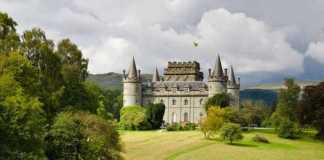Paris goes by many nicknames, including the City of Light, adopted after Paris became the first city to incorporate a network of streetlights in Europe. Paris is also the City of Love, and many couples flock to its streets to enjoy the city’s unmistakable romantic atmosphere. Paris is also famous the world over for its links to the fashion industry. From Paris Fashion Week showcasing incredible collections from fashion powerhouses such as Chanel, Dior and Saint Laurent twice a year to the casual yet hard-to-imitate style of its citizens, Paris is a must-visit city for any fashionista.
Paris is a city where its history is its lifeblood. Monuments and landmarks in Paris are a legacy of its fascinating past. The French Revolution ravaged the city, which saw the infamous prison La Bastille destroyed, and many French monarchs losing their lives at the guillotine. The streets of Paris were also once home to Spanish painter Picasso who spent much of his life living in Montmartre. Art is a key part of Paris’ culture, and it houses many large museums that protect some of the world’s most famous pieces of art. The Mona Lisa, painted by Leonardo da Vinci, has a permanent residence within the Louvre. Other notable paintings residing in the City of Light include numerous works by Van Gogh and Monet.
For many in Europe, Paris is a regular weekend city break, with so much to see and do that it draws visitors back time and time again. Paris is also famous for its incredible food, and its restaurants have more than 70 Michelin Stars combined. Whether you splash out on a fancy silver-service restaurant or keep things simple with a Jamon-beurre from a street vendor, Paris’ food is enough to keep you coming back for more. Whether it is history, food, or atmosphere drawing you to Paris, the City of Light is undoubtedly one not to be missed. Here are 30 landmarks in Paris to add to your bucket list.
Contents
- 30 Paris Landmarks For Your Bucket List
- Top 3 Paris Tours
- Famous Landmarks in Paris – 1st Century
- Famous Landmarks in Paris – 14th Century
- Famous Paris Landmarks – 16th Century
- Historic Parisian Landmarks – 17th Century
- Historic Landmarks in Paris – 18th Century
- Historic Landmarks in Paris – 19th Century
- Historic Paris Landmarks – 20th Century
- Natural Landmark in Paris
30 Paris Landmarks For Your Bucket List
Top 3 Paris Tours
- Paris Cityrama Hop-on Hop-off Bus Tours – explore Paris in your own time.
- Paris City Tour By Minivan – a great way to get your bearings when you first arrive.
- Paris City Tour Glasstop Luxury Bus (includes lunch) – another fun way to see the main sights in the city of light.
Famous Landmarks in Paris – 1st Century
1- Arenes de Lutece
Hidden from street view in the Latin Quarter is Arenes de Lutece, a 1st-century Roman amphitheatre.
Arenes de Lutece is one of only two surviving Roman structures in Paris and is the oldest historic monument within the city.
Arenes de Lutece was once an arena where gladiators would fight wild animals in the amphitheatre’s centre and could seat 17,000 spectators on its tiers.
Today the amphitheatre is in the centre of a public park and is often filled with young people playing football and workers picnicking on the tiers.
Arenes de Lutece is at 49 rue Monge, 75005, Paris.
Famous Landmarks in Paris – 14th Century
2- Notre Dame de Paris
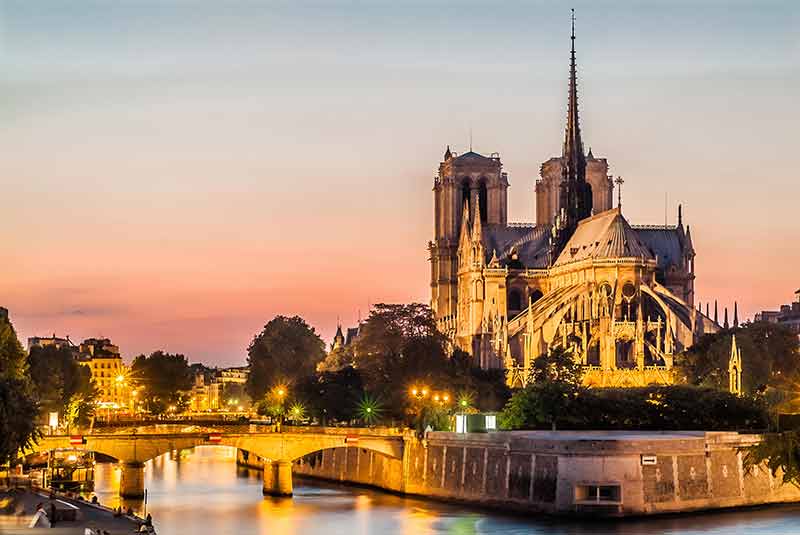
One of the most iconic landmarks in Paris is Notre Dame, which came to fame through its appearance in countless works of art, literature and cinema.
The cathedral stands on sacred ground and has been a symbol of the city since it was built.
Ile de la Cite, or City Island, is the very centre of Paris and where the Battle of Lutetia was fought in 52BC.
A Roman Palace once stood on this land, featuring several altars and temples.
Unfortunately, much of its archaeological history has been lost.
The design of Notre Dame features the golden ratio, a favourite inclusion in architecture and art, known to reflect true perfection.
The western facade of the cathedral shows this ratio through its height, width and positioning of windows.
At present, Notre Dame is closed to the public following a devastating fire in 2019 that destroyed its spire but you can learn about the rebuilding of Notre Dame on this intriguing virtual reality tour.
The French government is currently raising money to restore the cathedral to its former glory.
Notre Dame was built between 1163 and 1345.
Notre-Dame de Paris is at Ile de la Cite, 6 Parvis Notre-Dame, Pl. Jean-Paul II, 75004.
While in Paris, learn more about Notre Dame by joining this medieval history walking tour of Notre Dame Island.
3- Place de la Bastille
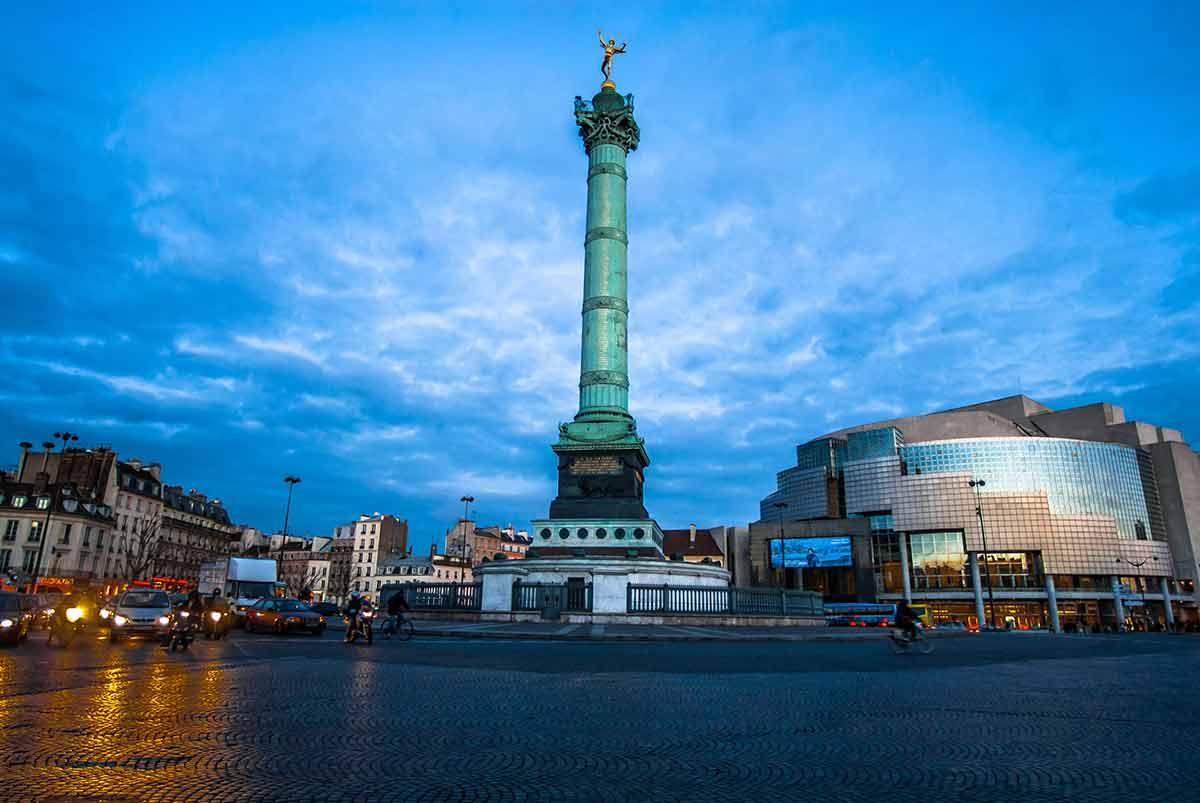
Another of Paris’ reminders of the French Revolution is Place de la Bastille.
The Bastille, a notorious prison, stood in the square until it was stormed and destroyed in 1790.
The Bastille was completely destroyed, and only the area it covered remained.
The square is centred by the July Column, a monument that commemorates the July Revolution of 1830.
The square is filled with open-air markets twice a week, and it is dotted with pleasant cafes and restaurants.
After the destruction of the Bastille, the square became a location to celebrate liberty, and many curiosities were erected there.
One such curiosity included a 24m (78ft) high elephant monument cast from bronze.
The monument was given immortality in Victor Hugo’s novel Les Miserables but was sadly demolished during the 1840s.
Place de la Bastille dates back to the 14th century and is at Place de la Bastille, 75011.
Learn more about this fascinating period on this French Revolution Walking Tour of Paris.
4- La Conciergerie
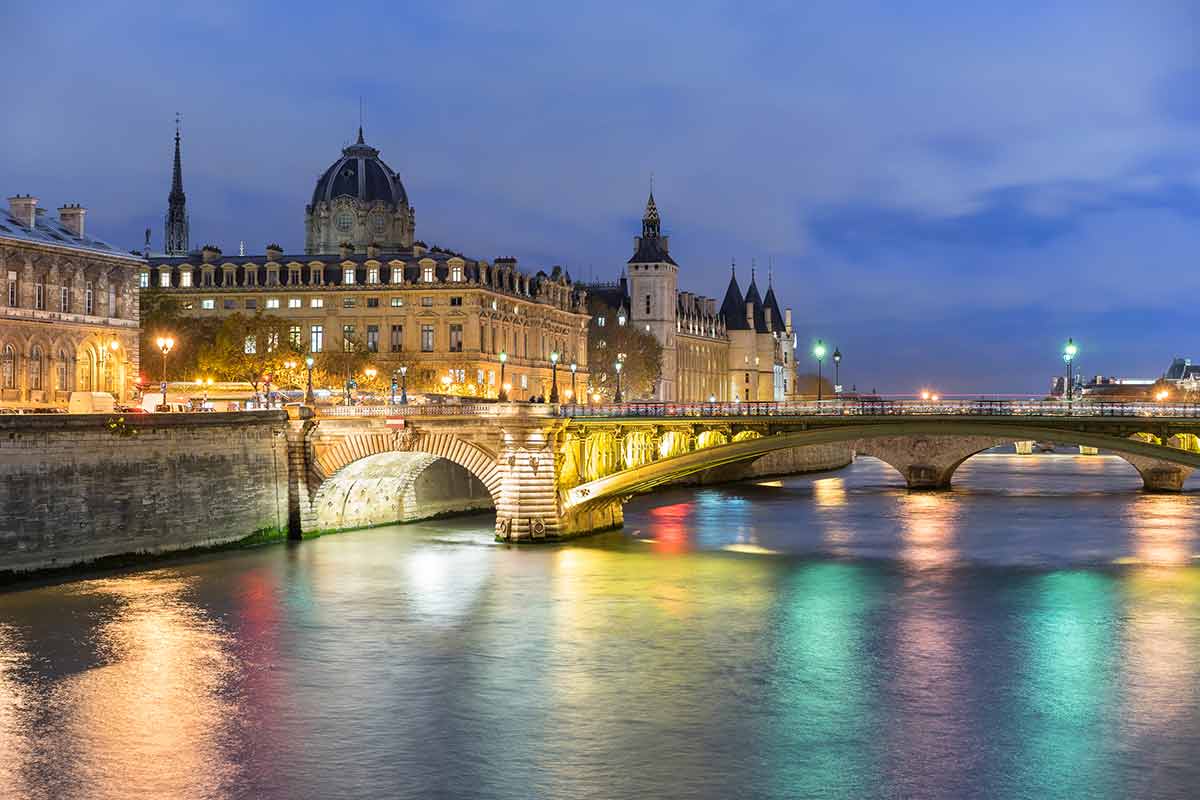
La Conciergerie is a vast palace that dates back to the Middle Ages. During this time, the palace was repeatedly modified and developed, with part eventually being turned into a prison.
The palace also served as the home of the French Parliament and is most famous for its role in the French Revolution. Spanning 10 months, the revolution saw more than 40,000 people die from execution or due to prison conditions.
La Conciergerie became a key prison where those who were due to be executed were kept.
Famous prisoners at La Conciergerie include Marie Antoinette, Robespierre and Andre Chenier.
It’s open to the public and is still used as the centre for Parisian Law.
La Conciergerie is at 2 Boulevard du Palais, 75001.
5- Saint-Jacques Tower
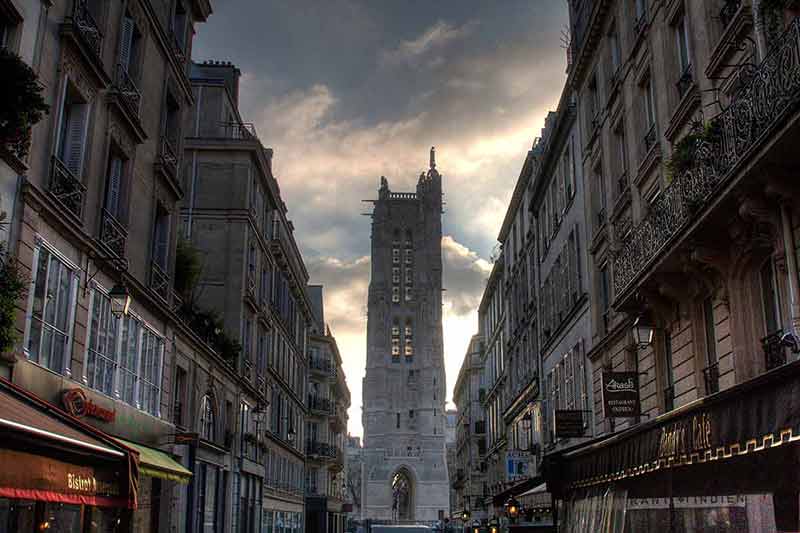
Saint-Jacques Tower is in a quaint little garden of the same name.
Built between 1509 and 1523, the Gothic tower is the only remaining part of the Eglise Saint-Jacques-de-la-Boucherie destroyed in 1797.
Around the tower are some notable statues, including Blaise Pascal’s statue, dedicated to his repeated barometric experiments at the base.
In the northwest corner, a statue of Saint Jacques le Majeur stands atop a meteorological station established in the late 1800s.
Carvings on each face of the tower feature depictions of the four evangelists; the lion, the bull, the eagle and man.
Saint-Jacques Tower is at Square de la Tour Saint-Jacques, 75004, Paris.
For more about France read:
For more about France, read:
- 30 France Landmarks
- 26 French Shows On Netflix
- 20 Castles In France
- 20 Beaches In France
- 20 Drinks In France To Try
- 20 Beaches In French Riviera
- 20 Amazing French Cities
- Food in France – 20 Dishes To Try
- Best Time To Visit France
- 15 Things France Is Famous For
- 20 Things To Do In Bordeaux
- 20 Luxury Hotels in Bordeaux
- 20 Things To Do In Marseille
- 20 Luxury Hotels in Marseille
- 20 Things To Do In Le Havre
- 20 Things To Do In Toulouse
- 20 Things To Do In Nantes
- 20 Things To Do In Dijon
- 15 Things To Do In Nice
- 15 Things To Do In Lyon
- 20 Paris Landmarks
- 20 Things To Do In Paris At Night
- Le Marais Walking Tour
- 20 Paris Tours
- Lost in Paris
- L’Hotel Paris Review
- 20 Best Day Trips From Paris
- 20 Paris Winter Attractions
- 20 Paris Museums
- 20 Things To Do In Saint Tropez
- 20 Things To Do In Lille
- 17 Luxury Hotels in Lille
- 20 Things To Do In Strasbourg
- 20 Things To Do In Grenoble
- 20 Things To Do In Montpellier
- 20 Things To Do In Reims
Famous Paris Landmarks – 16th Century
6- The Louvre
The Louvre is arguably one of the most important museums globally, housing everything from famous paintings, sculptures and archeological finds.
You would need at least 100 days to view every piece of art within the museum’s walls.
Impressively, more than 66% of the works within the Louvre are by French artists.
The Louvre, despite its grandeur and popular appeal, does have a dark history.
During WWII, the Nazis used the museum to house stolen art from homes and businesses they raided and destroyed.
The Louvre was a gigantic storeroom for everything they collected, and a display in 2018 showcased the stolen art.
It was originally built in 1546 on the site of a 12th-century fortress and its first use was as the palace of King Francis I.
The Louvre is at Rue de Rivoli, 75001. Skip the line and book your Paris Louvre Museum guided tour in advance here or if you’d prefer to wander around yourself with an audio guide, book it your tickets and skip the line.
Historic Parisian Landmarks – 17th Century
7- Avenue des Champs-Elysees
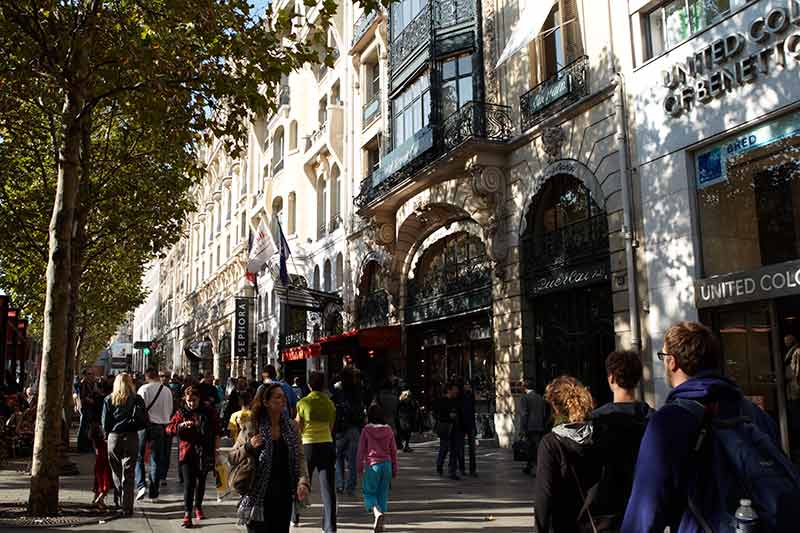
There are many famous landmarks in Paris but only a few come immediately to mind when discussing the City of Lights.
However, one that is never missed is the iconic Avenue des Champs-Elysees.
Avenue des Champs Elysées runs for approximately 2 km (1.2 miles) and despite its luxurious nature today, the avenue was once a swamp.
Since the 17th century, it has been developed into a must-visit landmark in Paris that is particularly popular with those interested in luxury fashion brands.
Stores such as Louis Vuitton and Guerlain have held flagship stores on the avenue since the early 1900s.
Avenue des Champs Elysées runs from Place de la Concorde to Arc de Triumph.
Explore the Champs Elysees and other landmarks in Paris by booking this Paris City Highlights In A Vintage Citroen.
8- Pont Neuf
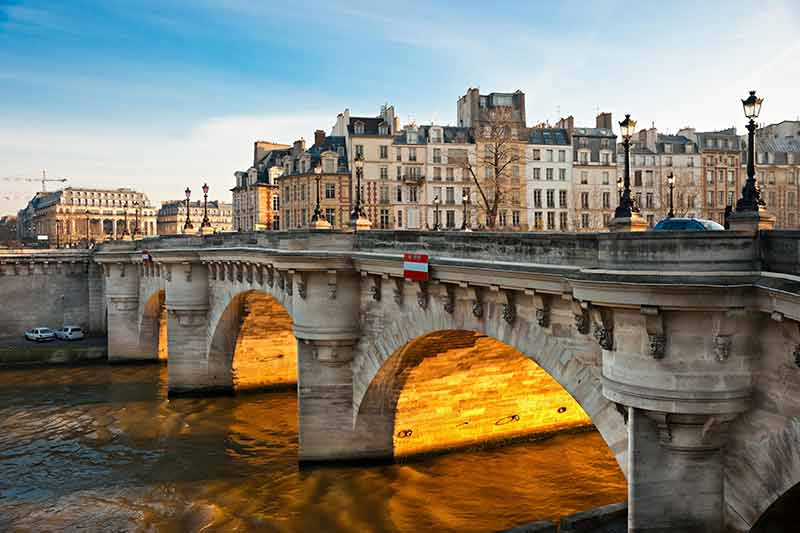
Pont Neuf, translating to ‘new bridge’, is the oldest still existing bridge crossing the Seine River.
Baptiste du Cerceau designed the bridge, which was built between 1578 and 1607.
The bridge was once considered the centre of Paris and filled with shops. It was also the main thoroughfare for movement in and out of the city.
The bridge has been renovated several times, including under the reign of Napoleon, who had the bridge’s foundations rebuilt. Further restorations in 2007 marked the bridge’s 400th birthday.
Pont Neuf is at Ile de la Cite, 75001.
9- Place Vendome
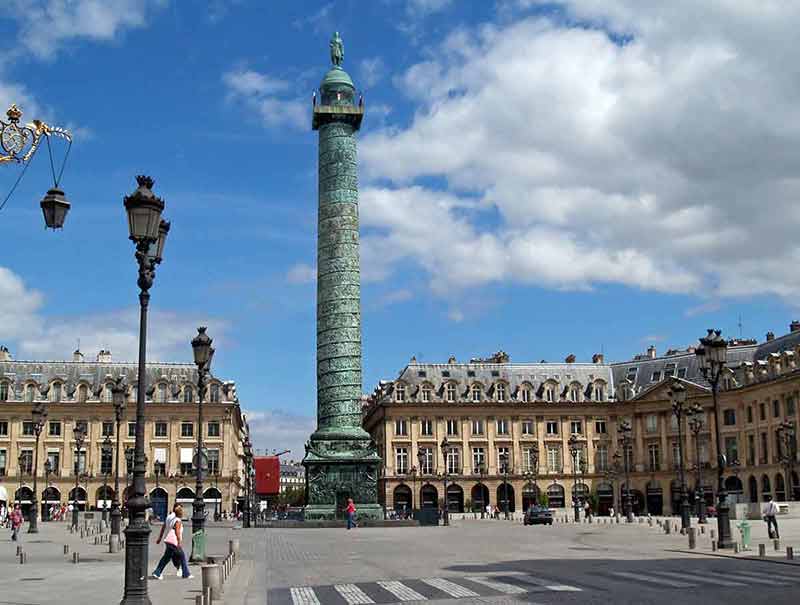
Place Vendome was built in 1698 as a monument to the armies of Louis XIV.
In the centre was a life-size equestrian statue that was destroyed during the French Revolution.
Following the French Revolution, the square was renamed Place des Piques, and a new column, the Vendome Column, was placed in the centre.
On the column is a relief copy of Trajan’s Column in Rome.
Aside from its historical allure, Place Vendome is home to some of the most famous French fashion brands, including Dior and Chanel.
Place Vendome is at Place Vendome, 75001.
For more amazing European Landmarks, read:
- 30 Spain Landmarks
- 20 Switzerland Landmarks
- 22 Germany Landmarks
- 35 London Landmarks
- 30 France Landmarks
- 20 Italy Landmarks
- 20 Greece Landmarks
- 20 Russia Landmarks
- 20 Scotland Landmarks
- 20 Ireland Landmarks
- 21 Wales Landmarks
- 20 Turkey Landmarks
- 20 England Landmarks
- 20 Hungary Landmarks
- 21 Romania Landmarks
- 20 Ukraine Landmarks
- 20 Athens Landmarks
- 20 Rome Landmarks
- 20 England Landmarks
- 20 Portugal Landmarks
- 20 Poland Landmarks
- 20 Iceland Landmarks
- 20 Bulgaria Landmarks
- 21 Croatia Landmarks
- 20 Bulgaria Landmarks
- 20 Austria Landmarks
- 21 Finland Landmarks
- 20 Sweden Landmarks
- 20 Denmark Landmarks
- 20 Belgium Landmarks
- 20 Netherlands Landmarks
- 20 Barcelona Landmarks
- 21 Czech Republic Landmarks
- 20 Landmarks in Paris
- 20 Landmarks in Liverpool
- 10 Istanbul Landmarks
Historic Landmarks in Paris – 18th Century
10- Pantheon
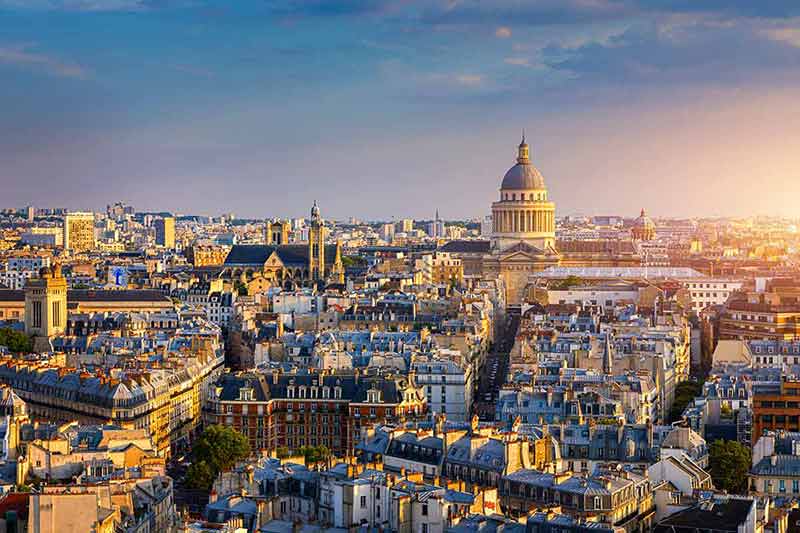
Pantheon, translating to ‘temple to all the gods’, is in the Latin Quarter of Paris.
Jacques-Germain Soufflot designed the Pantheon, which was built between 1758 and 1790 on orders of King Louis XV.
Pantheon was originally built as a church dedicated to Saint Genevive, the patron saint of Paris.
Following the French Revolution, however, the church was transformed into a mausoleum to house the remains of distinguished French citizens.
The remodelled design was heavily inspired by the Pantheon in Rome.
In total, there are the remains of 81 people inside the Pantheon, with the majority interred during Napoleon’s reign of the First French Empire.
Pantheon is at Pl. du Pantheon, 75005, Paris.
Historic Landmarks in Paris – 19th Century
11- Catacombs
A Parisian landmark for the brave, the Paris Catacombs is a dark labyrinth of bone beneath the streets of the City of Lights.
The catacombs are 20m (65ft) underground and were created during the 18th century when disease was rife.
The cause was the cities cemeteries, and authorities decided to move the bones of the deceased into a labyrinth of 15th-century quarry tunnels to Montrouge, outside of the centre of Paris.
The bones were moved under the cloak of darkness to avoid protests from the church and were piled high inside the tunnels.
Hericart de Thury decided to rearrange the bones in a more decorative, respectful and interesting manner in 1809, and so the Catacombs we know today were born.
Catacombs is at 1 Avenue du Colonel Henri Rol-Tanguy, 75014. Skip the line with this Paris Catacombs Tour offering VIP access to restricted areas.
12- Arc de Triomphe
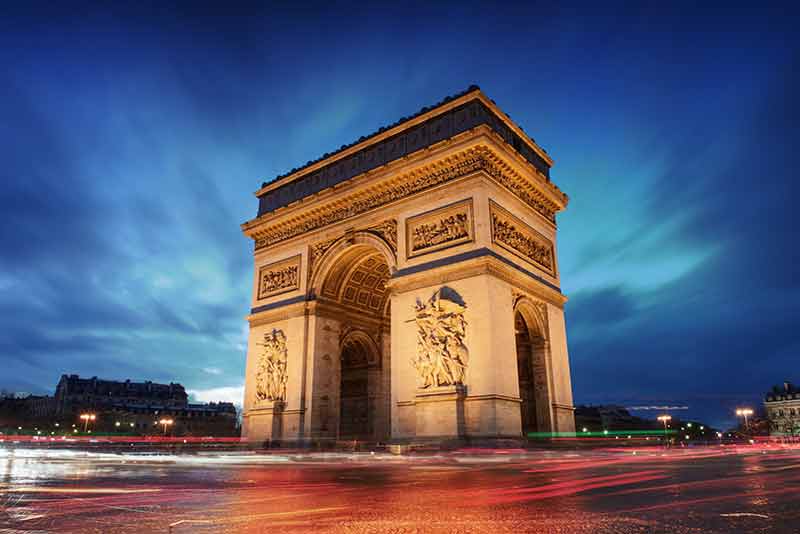
At the top of the Champs-Elysees, the Arc De Triomphe is a symbol honouring the countries military achievements both centuries ago and more recently in wars post-1900.
The land given to the Arc de Triomphe was originally planned to be given to a more unusual structure.
Charles Robert, a French architect, had plans sketched to construct a three-story elephant that would stand proudly as a landmark in Paris.
The elephant would feature staircases from the ground where people could see views over the city.
Sadly, authorities denied permission for the gigantic creature, and the Arc was built in its place.
The Arc is uniquely carved, and each of the four pillars tells four different stories of French history by four different sculptors.
It was built between 1806 and 1836.
Arc de Triomphe is at Pl. Charles de Gaulle, 75008. Skip the line and access the terrace and book your Arc de Triomphe entry ticket here.
13- Obelisk of Luxor
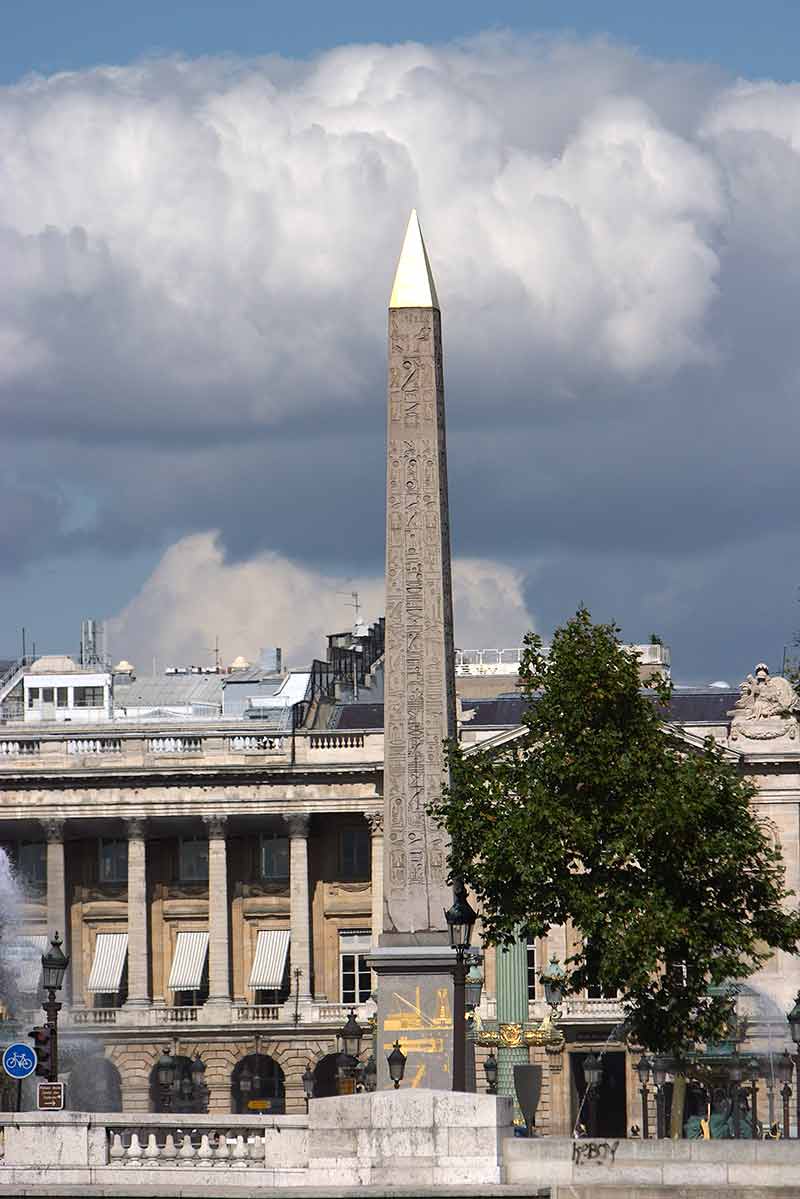
The Obelisk of Luxor was given as a gift from Egypt to Paris in 1830.
The Sultan and Viceroy of Egypt, Mehemet Ali, offered the two obelisks that stood at the entrance to the Luxor Temple as a gift of friendship to King Charles X.
The gift was a thank you for Champollion’s role in deciphering hieroglyphs on many newly discovered artefacts from Ancient Egypt.
The Obelisk of Luxor stretches for 22m (72ft) and, due to its shape and positioning, is the largest sundial in the world.
The obelisks are of great historical value, as they were built during the reign of Pharaoh Rameses II in the 13th century BC.
Obelisk of Luxor is at Place de la Concorde, 75008. Here’s a fun Paris private city tour in an electric tuk-tuk that goes to Place de la Concorde.
14- Boulevard Sant-Germain-des-Paris
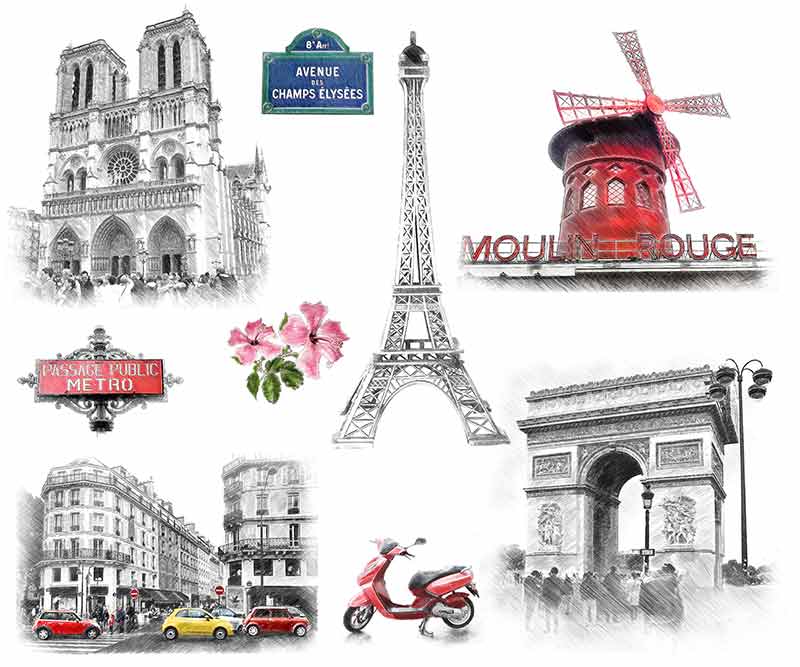
Every city in the world has a handful of must-visit streets, and Paris is no different.
Aside from the glitz and luxury draw to the Champs-Elysées, which draws millions of tourists each year, Boulevard Saint-Germain-des-Paris is a lesser-visited yet no less luxurious area of Paris that is not to be missed.
The Boulevard was created during the 1850s as part of the renovation of Paris.
The street takes its name from the nearby church of Saint-Germain-des-Pres, which dates back to the middle ages.
The Boulevard has long been a must-visit Parisian landmark thanks to its numerous and famous cafes such as Les Deux Magots and Cafe de Flore, which drew famous Parisians and creatives from the world over to their doors.
Boulevard Saint-Germain-des-Paris runs from Pont de la Concorde to Pont de Sully. You might like this guided walking tour of Saint Germain.
15- Fontaine Saint-Sulpice
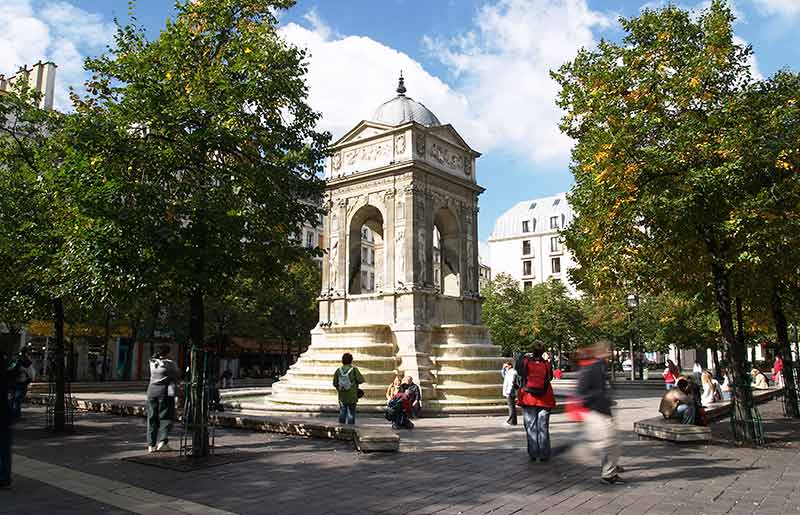
French architect Louis Visconti designed and built the spectacular Fontaine Saint-Sulpice between 1843 and 1848.
The fountain features four sculptures of important French religious figures during the 17th century.
Each of the four statues on the fountain were designed by a different sculptor.
Each statue also faces one of the four points of a compass, which gave the fountain the nickname of ‘La Fontaine des quatre points cardinaux’ or ‘Fountain of the four cardinal directions.
Despite being a monumental work of sculpture and design, the fountain was commissioned as part of a scheme to improve the water supply in Paris.
Once completed, it enabled residents to access clean drinking water.
Fontaine Saint-Sulpice is at 76 rue Bonaparte, 75006.
16- Palais Garnier
Charles Garnier designed the Palais Garnier during the 19th century, and it opened its doors to excitable audiences for the first time in 1875.
The opera house was the 13th opera house built in Paris following the introduction of opera to France by Louis XIV.
The architectural marvel reflects the style of Napoleon III, who commissioned the venue during his renovations of the city.
Palais Garnier is genuinely a reflection of French style and refinement thanks to its high levels of gilding across balconies and columns, rich red velvet seats and curtains and of course, the inclusion of lots of marble and onyx.
Palais Garnier is at Place de l’Opera, 75009. Reserve your spot on the popular Treasures of the Opera Garnier walking tour.
17- Eiffel Tower
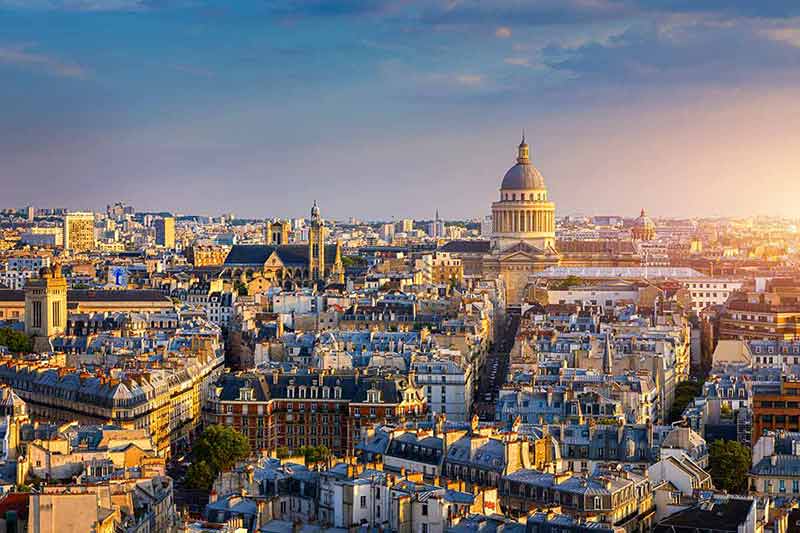
You cannot think of Paris without thinking of the Eiffel Tower.
This Parisian landmark was meant to be temporary as part of the Worlds Fair but has become an important attraction and symbol.
Unusually, the Eiffel Tower was sold on two separate occasions for scrap metal by famed con artist Victor Lustig.
20,000 light bulbs light up the famous tower each evening, and there’s a giant moving searchlight at its top, adding to the cities nickname of the City of Lights.
Gustave Eiffel designed the Eiffel Tower, however, 72 engineers, scientists and mathematicians contributed to building it. Their names are engraved on the side of the tower.
The Eiffel Tower opened on 31 March 1889 and is at Champs de Mars, 5 Av. Anatole France, 75007. Skip the line and book your Eiffel Tower Small-Group Tour for access to the summit by elevator.
18- Musee d’Orsay
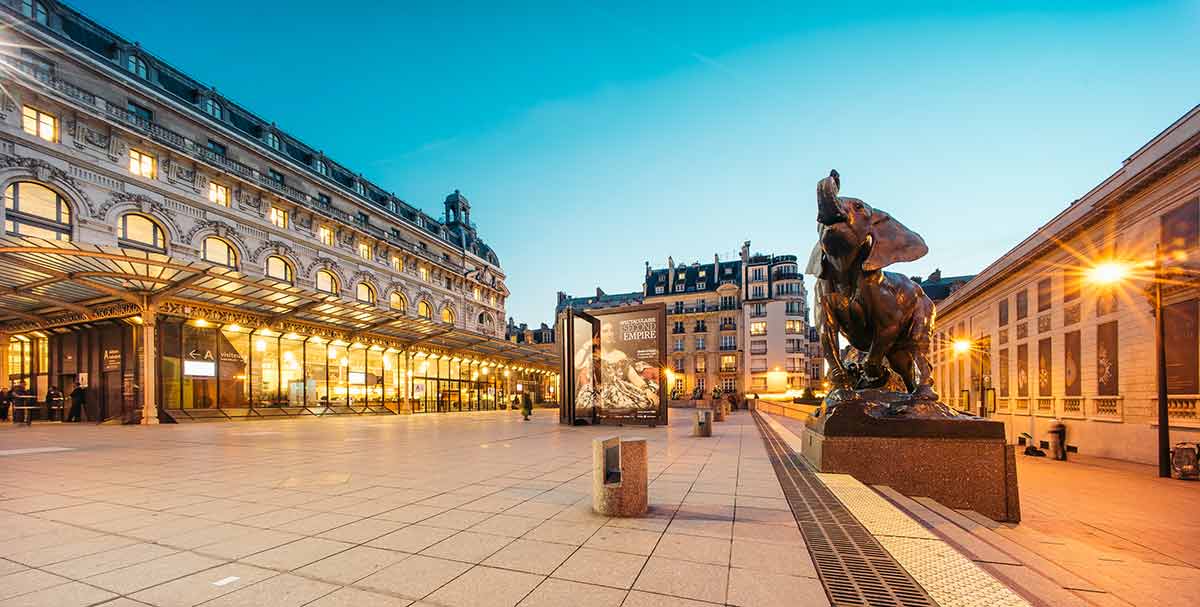
On the left bank of the River Seine is the spectacular and not to be missed Paris landmark of Musee d’Orsay.
Musee d’Orsay fills the former railway station of Gare d’Orsay, which was designed in the Beaux-Arts style in the final years of the 1800s.
Since its transformation into an art gallery, Musee d’Orsay celebrates the greatest works of French creativity, from paintings to sculptures.
While the crowds flood the Louvre for glimpses of the Mona Lisa, head to Musee d’Orsay to see a vast collection of Van Gogh, Monet, Cezanne, Renoir and more.
Musee d’Orsay is at 1 Rue de la Legion d’Honneur, 75007.
19- Pont Alexandre III
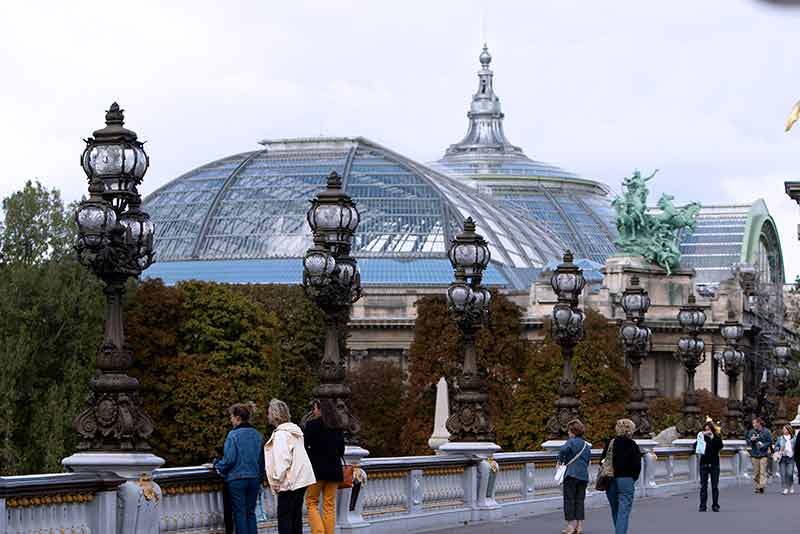
Pont Alexandre III is a magnificent bridge crossing over the River Seine and another famous landmark in Paris.
The bridge was completed in 1900 and was unveiled as part of the Universal Exhibition.
The bridge’s grand appeal comes from its white carved features and golden detailing.
The four corners of the bridge are finished by 17m (55ft) high columns topped with bronze sculptures of winged horses. Each horse is symbolic of the arts, sciences, commerce and industry.
The bridge crosses the River Seine at the Invalides on the Left Bank over to the Grand Palais on the Right Bank.
The best views of the bridge come from both the water and the river banks, where both vantage points can take in the bridge, the surrounding architecture, and of course, the Eiffel Tower.
Pont Alexandre III is at Quai d’Orsay, 75008.
20- Grand Palais
Grand Palais was built in 1900 as part of the Universal Exhibition.
The building’s design resulted from an architectural competition but no singular design wowed the committee, so three separate architects created the Grand Palais in its Art Nouveau style.
Henri Deglane designed the main section of the building, which looks out onto Avenue Winston-Churchill. Albert Louvet created the middle section, and Albert Thomas designed the rear of the building.
The building was constructed from steel, stone and glass, and still features the largest glass dome in Europe.
Within its spectacular walls are statues, mosaics and ornaments by more than 40 different artists.
Grand Palais stages more than 40 events each year, including theatrical performances, operas and ballets.
Grand Palais is at 3 Av. du General Eisenhower, 75008.
21- The Expiatory Chapel
The Expiatory Chapel was built where King Louis XVI and Queen Marie Antionette were buried following their execution during the French Revolution.
The chapel is dedicated to them.
Pierre Francois Leonard Fontaine, a French Neo-classical architect, designed the chapel in 1816.
The chapel follows the shape of a Greek cross with a dome at the centre.
Inside the chapel are marble statues of the King and Queen made by sculptors Francois Joseph Bosio and Jean-Pierre Cortot.
Head to the highly detailed apse to see incredible carved reliefs in the dome.
The Expiatory Chapel is at 29 Rue Pasquier, 75008.
22- Statue of Liberty
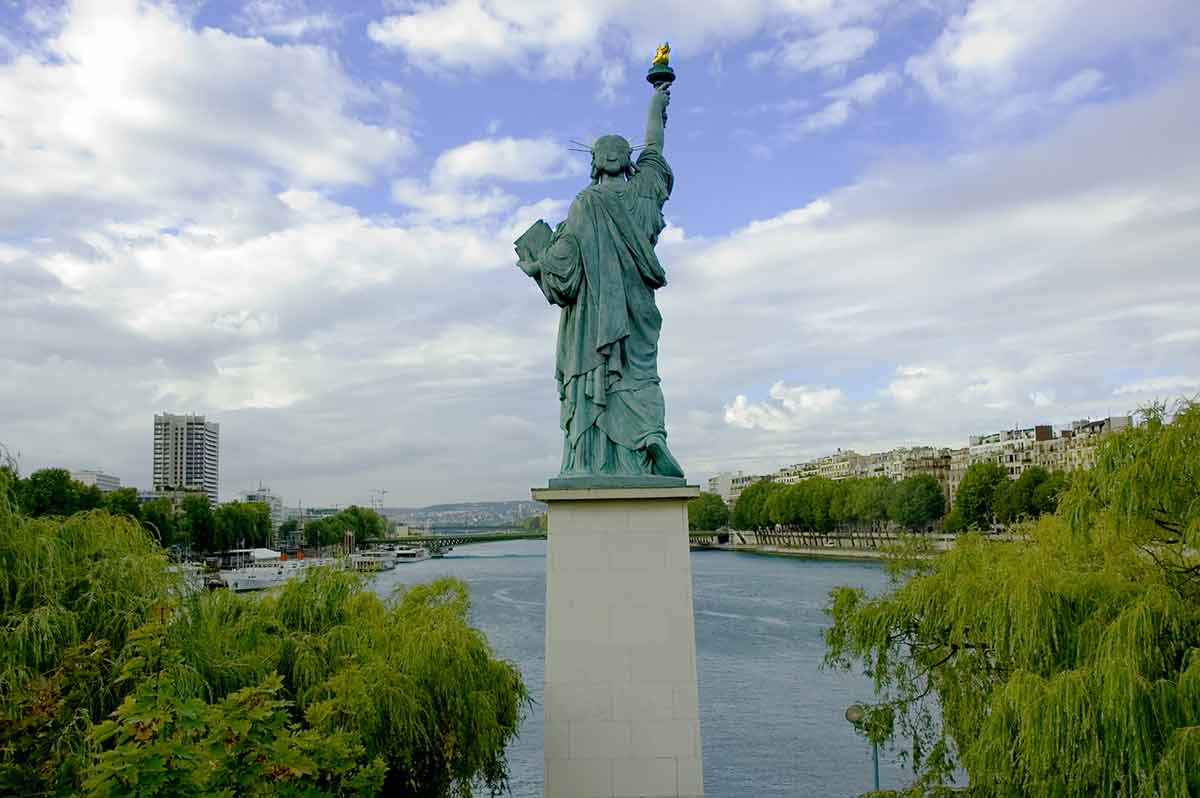
In total, Paris has three Statues of Liberty. Parisian Auguste Bartholdi designed the famous Statue of Liberty in New York, and his original model can is in the Musee des Arts et Metiers.
The replica found on Ile aux Cygnes, an artificial island on the Seine, was gifted by America to commemorate the centennial of the French Revolution.
The statue is a quarter the size of the statue in New York.
Since being made, the statue has moved around Paris and spent time on Pont de Grenelle for the Worlds Fair 1889.
Bartholdi wanted the statue to face the west towards New York however, the presidential inauguration needed to be done from the bridge, so it faced the east.
Finally, in the 1960s, Bartholdi got his wish and the statue was moved to the island to face its sister across the ocean.
Statue of Liberty is at Point Grenelle Ille des Cygnes, 75015, Paris.
More Landmarks in Asia:
Historic Paris Landmarks – 20th Century
23- Sacre Coeur
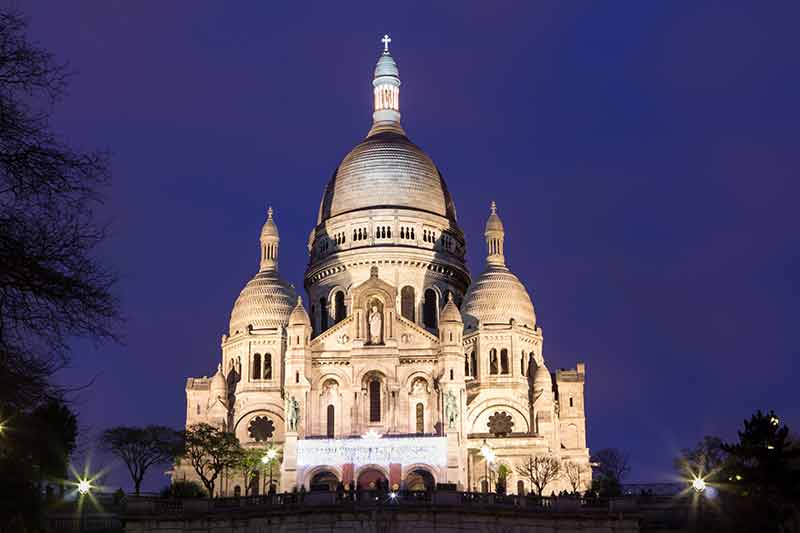
Sacre Coeur is another unmissable landmark in Paris.
The basilica, located at the top of Montmartre Hill, is one of the younger historical monuments in Paris, as the building began in 1870 and was only completed in 1914.
Sacre-Coeur’s location has been a sacred place for centuries.
The peak of Montmartre hill is one of the highest locations in Paris and was once an important location for Pagan worship.
Temples for Roman gods Mars and Neptune were once built at the site before Christians took it over.
An unusual feature of the basilica is its pristine white walls that defy the grey built up by pollutants that coat the city surrounding it.
The white walls are made from travertine limestone, which, when in contact with water, self cleans as it releases calcite.
This release of calcite gives the Sacre-Coeur its year-round pristine white walls.
Sacre-Coeur is at 35 Rue du Chevalier de la Barre, 75018.
24- Centre Pompidou
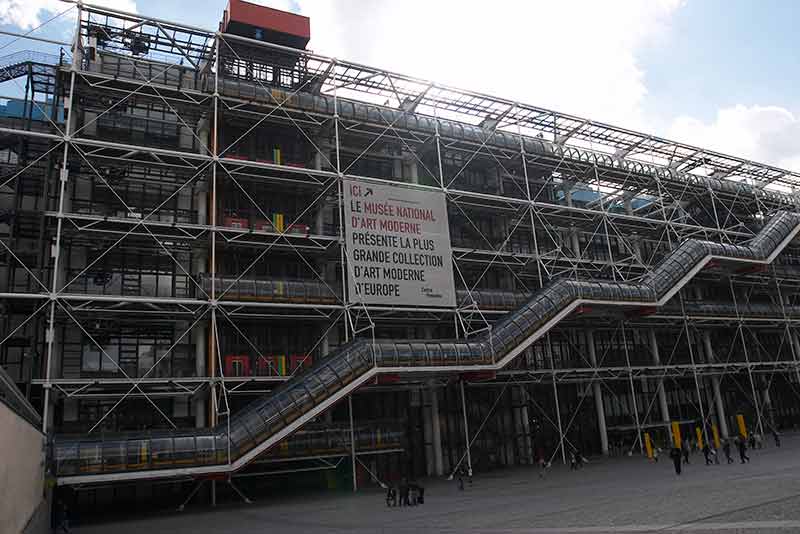
An unusual landmark in Paris is Centre Pompidou, which is a marvel of controversial architecture.
Centre Pompidou is dedicated to modern art and showcases regularly changing exhibitions featuring Pop Art, Cubism and more.
The building’s exterior replicates the modern art interior through its unusual boldly coloured ‘inside out’ structure.
Each colour has a significance, with green representing plumbing pipes and yellow showing the electrical wires.
Aside from its artistic allure, Centre Pompidou also houses an impressive library fully open to the public. There are more than 55,000 books and other media available.
The Pompidou Centre was completed in 1971.
Centre Pompidou is at Place Georges-Pompidou, 75004.
25- Musee de l’Armée
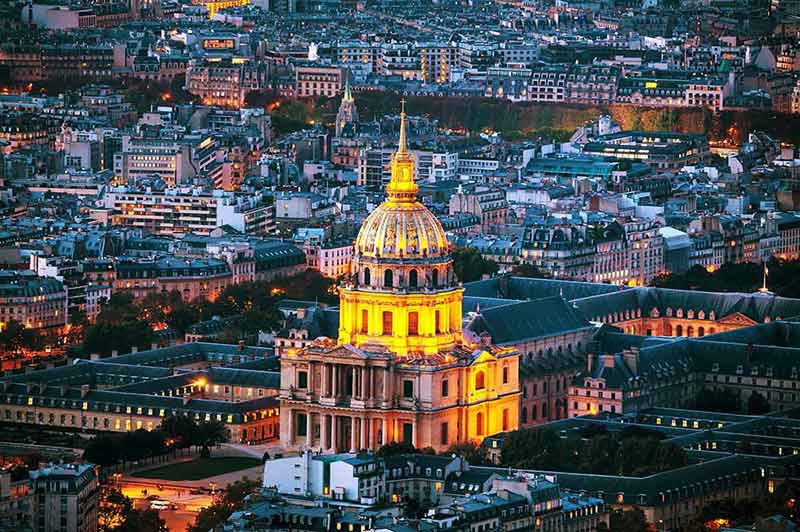
The Musee de l’Armee is inside the famous Les Invalides building in Paris.
Created in 1905 as a merger between the Musee d’Artillerie and the Musee Historique de l’Armee, the museum houses a range of collections dating from the 13th century to modern-day.
The main courtyard houses an extensive collection of artillery gathered following the end of the French Revolution.
Some of the most significant artefacts in the museum’s collection include important revelations in French weaponry, armour and works of technology from the middle ages to World War II.
Musee de l’Armee is at Hotel National des Invalides, 129 Rue de Grenelle, 75007.
26- Alpine Garden
Hidden inside the Jardin des Plantes is the Alpine Garden, a lesser-visited natural corner of Paris.
The garden is hidden by design as it is set 10ft (3m) into the ground to create a microclimate to allow the mountain plants within to thrive in a more suitable environment.
The collection began as plants grown from alpine seeds however, today, the garden’s collection is now filled with plant samples from mountains all over the world.
As the plants within the garden are all inside the lowered landscape, the gardeners have created a varying microclimate with a temperature difference as significant as 36 degrees Fahrenheit (20 degrees Celsius).
This allows plants from the Atlas Mountains, Himalayas and Japan to live together.
Alpine Garden is at 57 Rue Cuvier, 75005, Paris.
27- Japanese Garden of the Buddhist Pantheon
The Japanese Garden of the Buddhist Pantheon is behind the Guimet Museum, which is the home to an impressive collection of Asian art.
The garden covers 450 square metres (4843 square feet) and was added to the museum in 1991 as part of a series of renovations.
The garden is designed to be a little slice of Japanese zen inside the busy French capital.
It is filled with giant bamboo, flagstones, delicate wooden bridges and a pond filled with koi carp.
A lodge inside the gardens, created in a partnership with Japanese artists and carpenters, hosts Japanese tea ceremonies.
Japanese Garden of the Buddhist Pantheon is at Galeries du Pantheon Bouddhique – Japanese Garden, 19 avenue d’lena, 75116, Paris.
28- Open Air Sculpture Museum
Paris’ Open Air Sculpture Museum runs along the banks of the Seine between Post de Sully and Post d’Austerlitz.
The museum opened in 1980 in Square Tino Rossi.
Works displayed in the museum include those from Cesar, Nicolas Schoffer and Emile Gilioli.
As the museum is outdoors and part of a walkway along the Seine, it is completely free to access and is open year-round.
Open Air Sculpture Museum is at Quai Saint Bernard, Square Tino Rossi, 75005, Paris.
29- Fondation Louis Vuitton
Foundation Louis Vuitton is a marvel of modern architecture and contemporary art.
The Foundation was created in 2006 by the LVMH Group who desired to develop a commitment to arts, culture and heritage.
Frank Gehry designed the building for LVMH Group as a ‘magnificent vessel for Paris that symbolises France’s profound cultural vocation.
The architecture of the building is as much a draw as the art and culture housed within.
The Foundation’s main aim is to open up the arts to the public and make them accessible to everyone.
The Foundation hosts numerous temporary exhibitions covering both modern and contemporary art.
It also houses several pieces of work that are part of LVMH’s private collections.
Fondation Louis Vuitton is at 8 av. du Mahatma Gandhi.
Natural Landmark in Paris
30- Seine River
The Seine River stretches 775 kilometres (481 miles) across Northern France before ending in the Paris basin.
The river has been the city’s lifeblood and has featured in many works of art and literature, including Les Miserables and Madeline.
One of the best ways to take in the major landmarks of Paris is from the waters of the Seine, on a daytime or nighttime river cruise.
Head out during the day for spectacular views of these landmarks and perhaps a three-course meal.
See the city and the water light up during an evening cruise thanks to the nightly light show at the Eiffel Tower and the romantic streetlights along the river bank.
The Seine River runs through the centre of the city and is a natural landmark of Paris.
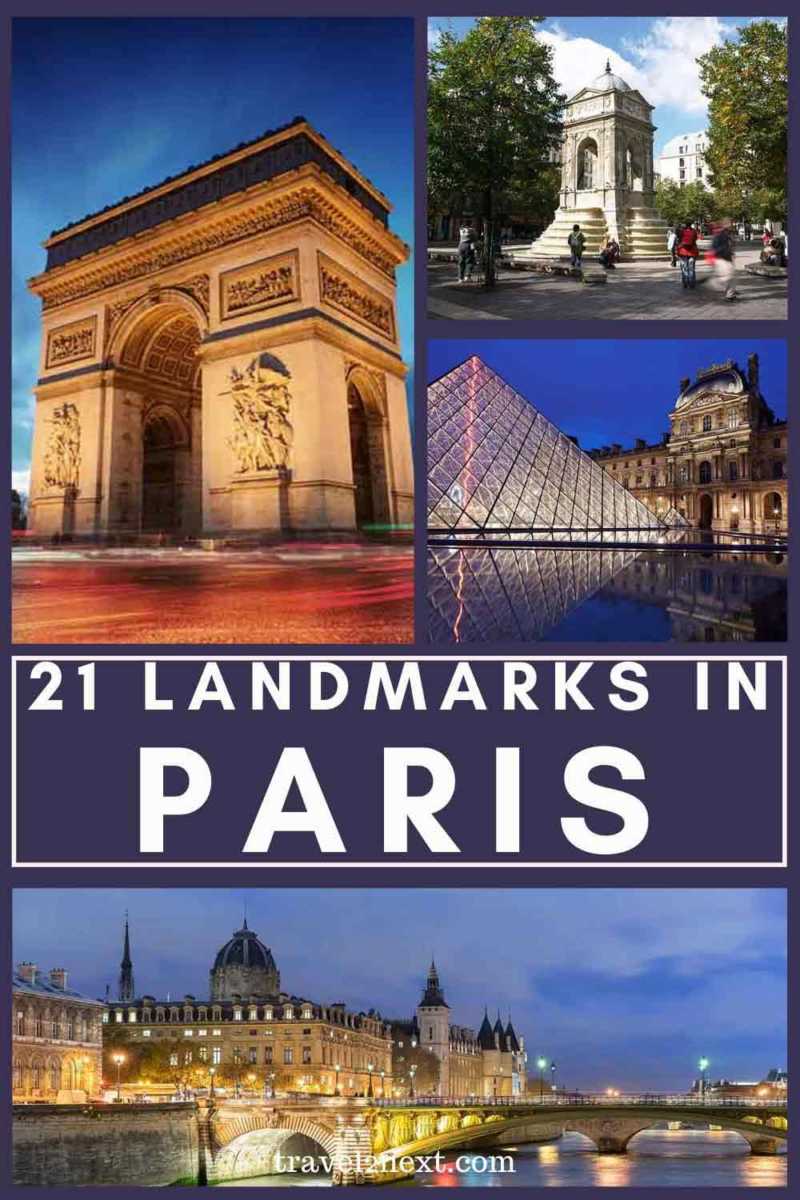
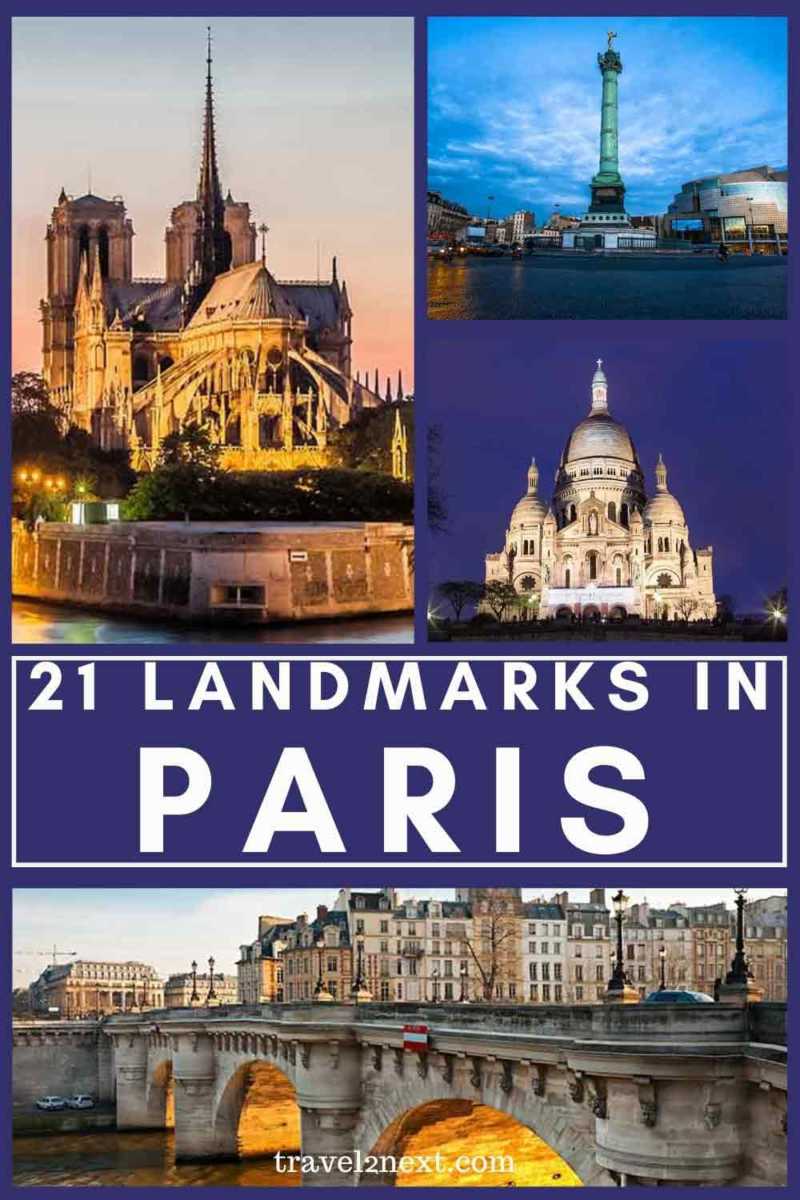
Plan Your Trip

Rent A Car – Find the best car rental rates at Discover Cars. They compare car hire companies to provide you with the best deal right now.

Find A Hotel – If you’re curious about this article and are looking for somewhere to stay, take a look at these amazing hotels.
